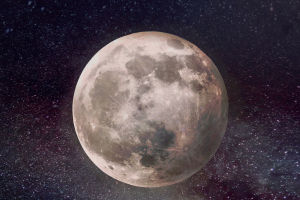In the 1960s, the race to conquer space was more than a technological challenge; it was a geopolitical contest. At the heart of this was NASA's Apollo program, a historic series of space missions aimed at landing humans on the Moon and returning them safely to Earth.
We all know that Apollo 11 made history with Neil Armstrong's first steps on the lunar surface, but there's so much more to the story that made this feat possible.
The Genesis of Apollo
In 1961, President John F. Kennedy gave a bold challenge to NASA: to land a man on the Moon by the end of the decade. This vision ignited one of the most significant space endeavors in history. The program included a total of 11 missions, four of which focused on testing equipment, while six successfully landed astronauts on the Moon.
Preliminary Steps: Mercury and Gemini
Before the Apollo missions, NASA laid the groundwork with the Mercury and Gemini programs. The Mercury program sent astronauts into space to test human survival and work conditions, while Gemini involved two-person missions, which allowed for critical maneuvers needed for a lunar landing. These programs were instrumental in preparing astronauts for the monumental task ahead.
The Development of Apollo's Technological Wonders
For Apollo, NASA developed groundbreaking technology, such as the Saturn V rocket—one of the most powerful launch vehicles ever built. Standing as tall as a 36-story building, the Saturn V was essential in carrying the astronauts to the Moon. The command module, where astronauts traveled, was as cramped as a car interior, making the journey particularly challenging. The lunar module, which separated from the command module and descended to the Moon's surface, had legs as delicate as a spider's, emphasizing the risks involved.
Major Milestones
The Apollo missions had their fair share of triumphs and tragedies. Apollo 1 tragically ended in disaster when a fire broke out during a pre-launch test, killing three astronauts. This setback led to extensive redesigns, but the program pressed on. Apollo 7 successfully tested the command module in Earth's orbit, paving the way for more ambitious missions. Apollo 8 was the first mission to orbit the Moon, and Apollo 11's historic landing brought the world's attention to the Moon as Neil Armstrong and Buzz Aldrin made their first footprints on its surface.
Lasting Legacy and the End of Apollo
The Apollo program made its final mission with Apollo 17 in 1972. By then, 12 astronauts had walked on the Moon, bringing back samples that continue to shape our understanding of the Moon and the Earth. Although public interest waned and funding was redirected to other projects, the Apollo program's influence is felt to this day. NASA's Artemis program, which aims to return humans to the Moon by 2024, is the next step in continuing the legacy of the Apollo missions.
We can all look back on the Apollo program as one of the greatest achievements in human history. It wasn't just about reaching the Moon—it was about pushing the boundaries of human capability and expanding our understanding of what is possible. From the tragic loss of Apollo 1 to the triumphs of Apollo 11, the program taught us invaluable lessons that continue to inspire future generations.


